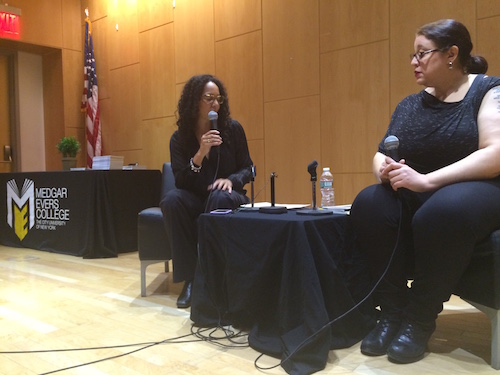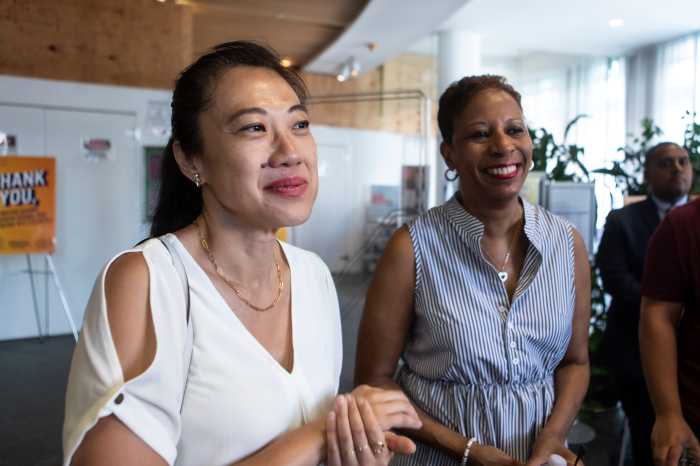Poet and professor Tara Betts looks around Paterson, New Jersey, while on a date, and doesn’t just see Allen Ginsberg or William Carlos Williams. In her poem, “The Paterson Falls & Hinchliffe,” she leads the reader to see the now-defunct Negro League’s decomposed Hinchliffe Stadium burgeoning, the overpowering athletes, the games packed, and the scorecards oversubscribed.
“One of our first dates is the best memory/ I can cradle about Paterson, New Jersey./ He parked the car on the warm June night,…/ The Paterson falls’/ constant churn that bred silk factories gone./ I gasped because it looked like the battered/ cover of Williams’ Paterson on my crammed bookshelf, but this one roared a perpetual…/ As we walked away, I spotted the concrete wall with Greek athletes on tiles embedded near its top./ When I asked what is this abandoned place/ with a sign that reads Hinchliffe, you said/ it was a Negro League stadium./ I imagined Satchel Paige pitching and Minnie Minoso in his prime./ My quick squeeze on your arm/ and a smile was all I needed to convince you/ to climb through the folded back tear/ in the chain link fence with me. / I stared at the silent empty field around us. / New trees, slender and slightly taller than us,/ sprouted in the modest bleachers./ There’s history that I cannot write when decaying, forgotten places cling to the present./ There is a history that I thought we could write,/ but those early drafts were scrapped.”
This month, Medgar Evers, a predominantly black public college in central Brooklyn, hosted a series of readings to celebrate Black History Month. Yesterday, Dr. Betts, author of the poetry collection, Break the Habit, Trio House Press, 2016, was interviewed by Dr. Victoria Chevalier of the school’s Department of English.

During the question-and-answer session, Dr. Betts estimated that it could be challenging for young black authors to break out in the writing industry. Especially when writing programs are flourishing and not that many black-student acceptances are bursting forth. Not to mention that many editors in the field are white. However, Dr. Betts has been able to become a principal discovery in the poetry scene. Her poems, “Arc & Hue” and “What It’s like to be a Mixed Girl” thrive on memory. In one verse, she confronts being seen by her coworkers as “being painted with zebra stripes.” Her poetry comes alive in “Arc & Hue,” when she describes the collection of rats in ghetto apartments. All the while, Dr. Bets is subdued and graceful.
Another aspect of the serenity of Dr. Betts is when she describes her interactions with Bill Ayers, a former domestic guerrilla turned education scholar for progressive reform, as “a friendly guy”. She goes on to feel an ungovernable urge to say that she has befriended “dangerous radicals” to the chagrin of extreme right-wing shock jocks.
The mostly student-filled audience was greatly amused by Dr. Betts. She is a gifted poet and her mellifluous verses are a device for rationalization, when people are struggling to deal with the pains of life.






